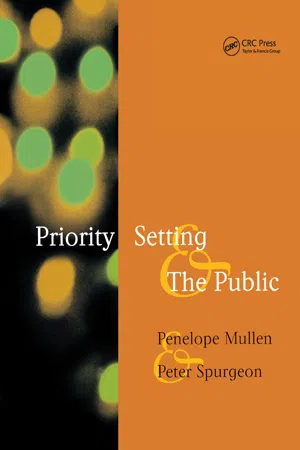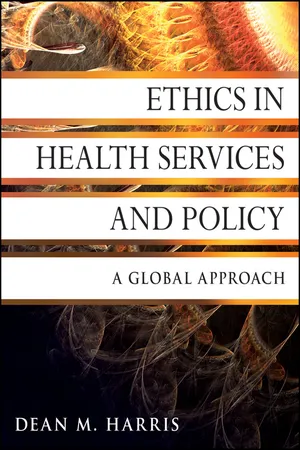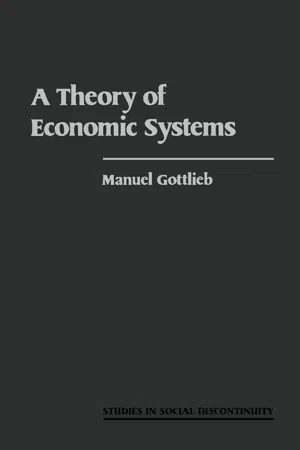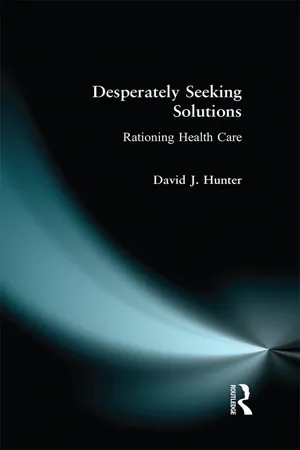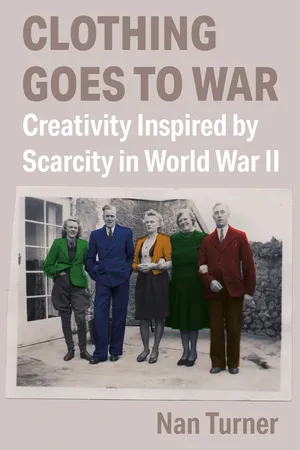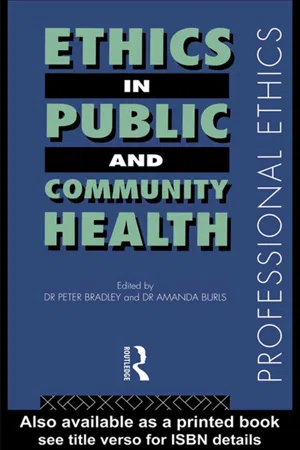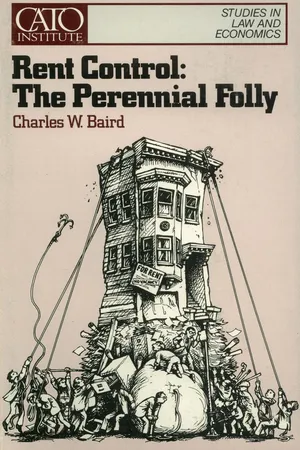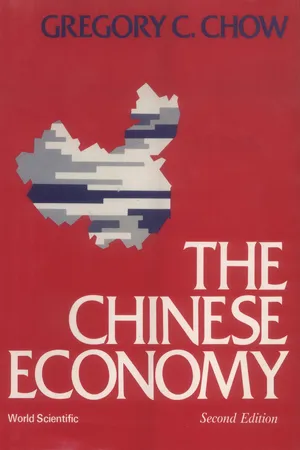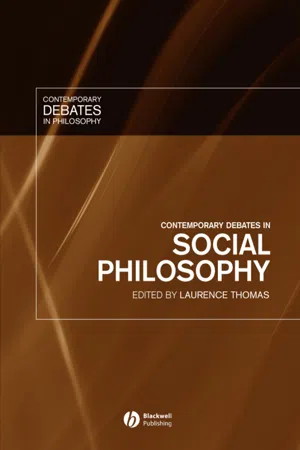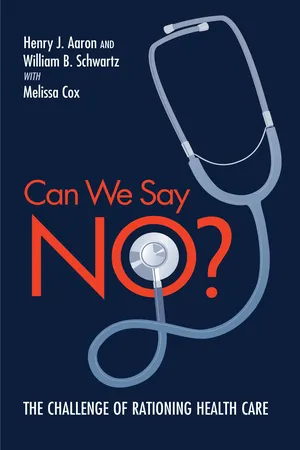Economics
Rationing
Rationing refers to the allocation of scarce resources, such as goods or services, in a controlled and equitable manner. It is often implemented during times of shortage or crisis to ensure fair distribution and prevent hoarding. Rationing systems can be based on various criteria, such as need, price, or government-issued coupons, and aim to balance supply and demand.
Written by Perlego with AI-assistance
Related key terms
1 of 5
12 Key excerpts on "Rationing"
- eBook - ePub
- Penelope Mullen, Peter Spurgeon(Authors)
- 2018(Publication Date)
- CRC Press(Publisher)
Despite the widespread debate on healthcare Rationing, many UK commentators simply use the word ‘Rationing’ – undefined – and proceed with the discussion from there. There is often little attempt to define what is meant by Rationing but, nevertheless, it quickly becomes apparent that different commentators are interpreting it in different ways.However, despite the suggestion above that the term ‘Rationing’ is now considered emotive, Rationing still carries for many the wartime notion of fairness, where food Rationing was instituted to ensure equitable allocation of a scarce commodity, rather than allowing allocation by market price. This notion is picked up by some commentators in the US literature, where there seems a far greater propensity to seek definitions of Rationing. For instance, Fleck (1992) turns to Reagan’s (1990, p.223) definition of Rationing as ‘a mode of non-price distribution of particular services among particular individuals’ which ‘is “inherently” comparative ... [as] ... community policy makers seek to achieve equitable distribution of what is a scarce resource’. Mechanic (1985, p.457) states that ‘Rationing is no more than a means of apportioning, through some method of allowance, some limited good or service’.However, turning specifically to healthcare, a more emotive tone is detected in the US literature. Relman (1990, p.1809) defines the ideas of Rationing now being proposed as ‘the deliberate and systematic denial of certain types of services, even when they are known to be beneficial’, which he contrasts with the kind of Rationing by ‘global government budgetary restraints on facilities and personnel, such as occurs in centrally planned health economies like those of Great Britain or Sweden’.Nelson and Drought (1992, p. 101) offer ‘withholding necessary interventions from patients’, whilst Dougherty (1991, p.3) states that health services prioritisation implies ‘a form of health care Rationing, that is, the denial of services that are potentially beneficial to some people because of limitations on the resources available for health care. This means putting the common good ahead of the interests of individuals in some cases’. - eBook - ePub
Ethics in Health Services and Policy
A Global Approach
- Dean M. Harris(Author)
- 2011(Publication Date)
- Jossey-Bass(Publisher)
Rationing system is defined as a method of limiting consumption of some good or service, in order to limit the demand to the level of supply (Rosen and others, 2005, p. 1098). “Rationing takes place when an individual is deprived of care which is of benefit…and which is desired by the patient” (Maynard, 1999, p. 6).Is it ethical to ration beneficial health care services? In its World Health Report 2000, the World Health Organization (2000) recognized “the ethical principle that it may be necessary and efficient to ration services but…it is inadmissible to exclude whole groups of the population” (p. 16). Thus, the ethical issue of Rationing is not whether it is ethical to ration but rather how the Rationing is done. Which methods of Rationing are most ethical, and which should be avoided on the ground that they are unethical? One way of limiting the demand for a good or service is by Rationing on the basis of the ability to pay (Maynard, 1999, p. 6). With regard to health care, however, most people believe it is extremely unethical to ration scarce resources on the basis of an individual's ability to pay. Therefore, other criteria must be developed and applied to limit demand to the level of supply.This chapter begins by putting the issues of Rationing in context, explaining how Rationing of medical care fits within a broader set of issues about different ways to allocate the resources of a society. Decisions about allocating societal resources present a series of questions with important ethical implications. Then the chapter evaluates the various methods of Rationing and the ethical considerations in each method. For example, should we ration scarce health care resources on the basis of the age of the individual patient, social worth of the patient, or some other explicit or implicit criterion? This discussion includes an excerpt from an article about Rationing of scarce antiretroviral therapy for HIV/AIDS in Africa, and the various ways in which those Rationing decisions could be made. This chapter concludes with an analysis of comparative effectiveness research and cost-effectiveness analysis, including the use of those methods in countries with national health systems and universal health insurance. At the end of this chapter, an activity provides an opportunity to evaluate the ethical implications of cost-effectiveness analysis from several different perspectives. - eBook - PDF
- Manuel Gottlieb, Charles Tilly, Edward Shorter(Authors)
- 2013(Publication Date)
- Academic Press(Publisher)
But other forms of Rationing on a more restricted scale are the normal method for the allo-cation of some resources and products within mass organizations—such as centralized churches, armies, universities, prisons, and welfare institutions. Rationing is also a common method of commodity distribution among branches of enterprises in the Western world and among industrial enterprises 22 Even before the 1965-1967 reforms, pricing norms included the need to stimulate pro-duction of particular goods and to regulate the demand for them. Institute of Economics, Political Economy, 1954, page 591. 2 3 Nove, Soviet Economy, 1961, pages 150 ff. 24 Perhaps the high point of these anomalies was the proposal for setting prices for cotton, baked bread, and grain at an identical per-ton price. See Stalin, Economic Problems of Socialism, 1952, 19 ff. 2 5 Nove, Soviet Economy, 1961, pages 150 ff. 1 9 8 5. C O O R D I N A T I O N OF R E S O U R C E U S E WITHIN A N D B E T W E E N M O D E S of the Soviet economy for many goods and services. Within a solidary or collégial institution, a rationed allotment is received without any passage of money or of formal entitlement. Elsewhere, a rationed allotment usually re-quires for its completion payment in the current money. During World Wars I and II, goods in critical shortage in the combatant countries that were ra-tioned included basic foodstuffs, fuel, and even use of housing in areas where there was extensive destruction. Despite widespread experience with Rationing as a mode of commodity distribution, it now touches chords of extreme ideological sensitivity in the American scene, where any suggestion of ra-tioning arouses categorical and unqualified antagonism. The earliest peacetime governmental Rationing scheme historically recorded is probably food distribution established in the late years of the Roman Re-public and for the later imperial years at Constantinople and in limited periods at a few other major urban areas. - eBook - ePub
Desperately Seeking Solutions
Rationing Health Care
- David J. Hunter(Author)
- 2018(Publication Date)
- Routledge(Publisher)
Chapter 6 - on issues and prospects examines the Rationing debate in the light of the preceding chapters and endeavours to draw some conclusions from it. These form the basis of an examination of options for addressing some of the dilemmas arising from Rationing, in particular the extent to which it should be explicit and involve the public in determining priorities. This chapter explores further my views on what the nature of the problem is and how it might be tackled. There are no right or perfect answers when it comes to resolving the Rationing dilemma, although some may be more acceptable and achievable than others.By the end of the book, it is hoped that the reader will be better informed about the subject of Rationing health care, have had their assumptions or prejudices challenged, or at least subjected to searching scrutiny, and have acquired a deeper appreciation of how difficult, complex and intensely political the subject is. If the book achieves all this, or even gets close to doing so, then its purpose will have been amply served.Passage contains an image
Chapter 2Defining terms
Introduction
'Rationing' is a term with pejorative overtones. Since the 1991 NHS changes it has become a key word in the unofficial lexicon of health policy. Officially, rather like 'health inequalities', the word is outlawed and successive Secretaries of State have refused to grace it with their approval. They prefer to use the terms 'priority-setting' and 'making choices'. Indeed, until the 1991 changes, these terms were in common currency in official policy statements and plans. 'Priority-setting' is viewed as a term which makes Rationing 'sound a little less grim, and a little more scientific, than in fact it is' (Loughlin 1996: 146). Rationing is associated with limited supply. The word is linked to the notion of sacrifice and to emergency or exceptional situations where resources are limited, such as wartime rations.Words are important because the terms used to define phenomena reveal much about the processes and activities they seek to describe or, conversely, obscure or conceal. They also illustrate the broader state of a policy field, like health, and how it is perceived both by the politicians who shape it and by the public who are its recipients and also, hopefully, its beneficiaries. Given the NHS's popularity with the public, politicians tread warily when it comes to matters which might be politically damaging. The 1991 NHS changes have not been at all popular with the public who, for the most part, probably do not fully understand them in any case. But, whatever the reasons for their lack of popularity, the changes led the public to be even more suspicious of a government which was seen to be ideologically opposed to the very concept of the NHS despite repeated assurances and protestations to the contrary. No doubt such reactions contributed to the defeat of the Conservative government in May 1997. The use of the term 'Rationing' cannot therefore be divorced from the overall package of NHS changes introduced in 1991 with their emphasis on competitive market-style approaches, including a focus on responding more sensitively to user preferences. These developments were in sharp contrast to earlier reforms in the health service through the 1970s and 1980s which had largely been confined to structural and managerial concerns but within a firmly collectivist public service framework. The adoption of business principles, private sector management practices and a consumerist focus did not begin to take a grip until the arrival of general management in the early 1980s which paved the way for the 1991 changes. These later developments, which provide the context for the current debates on Rationing, are the subject of Chapter 3 - eBook - ePub
Clothing Goes to War
Creativity Inspired by Scarcity in World War II
- Nan Turner(Author)
- 2022(Publication Date)
- Intellect Books(Publisher)
1Rationale for Rationing: The Demanding War
Into this motley scene of trade in which merchants struggled with each other to please consumers rich and poor, young and old, chic and frumpish, with subtle mixtures of price, quality and style, came the war, the greatest consumer of all, like a giant tapeworm, exacting, changeable, insatiate.Henry Ewart Wadsworth, Utility Cloth and Clothing SchemeEconomic recovery after the Great Depression was just beginning and unemployment was still high in 1939 when Germany invaded Poland and set World War II into motion. The war was a massive consumer, needing,Labour, factory space, internal transport, domestically produced materials and fuel—indeed, resources of all kinds—must be diverted to the war effort, leaving only enough on civilian work to produce the “essential minimum” needed to maintain the population’s strength and morale.(Reddaway 1951 , 182)The threat of attack on global shipping, embargoes on trade, and invading enemy forces pilfering supplies from occupied countries resulted in shortages that intensified civilian deprivation and suffering (Brinkley and Haskew 2004, 243). Rationing, defined as the “distribution of resources on the basis of equity or need or some criterion of priority,” was inevitable in many countries as production of supplies for the military was prioritized, creating a scarcity of goods to fulfill the needs of private citizens (Lloyd 1942 , 49). Sir William Beveridge, the British economist, addressed the issue of prioritizing the allocation of resources to the military in The Times saying, “It would be universally admitted that, in any danger of there not being enough for all, the fighting forces should have priority” (1939, 9).The governments of Australia, Canada, France, Germany, Japan, New Zealand, Russia, the UK, and the USA implemented programs to ration consumer goods. Countries occupied by Germany and Japan were also subjected to Rationing, often more intense and austere as the invaders pilfered supplies to send back home. Although Rationing was “meant to be a token of mutual fairness and equality of sacrifice in wartime” (Lauterbach 1944 , 209), it was sometimes just an “equality of misery” (Sladen 1995 - eBook - ePub
- Peter Bradley, Peter M Bradley, Amanda Burls(Authors)
- 2012(Publication Date)
- Routledge(Publisher)
At present, Rationing policy in the UK National Health Service (NHS) is mostly implicit in that decisions about which treatments should be funded are decided without national or local debate. Many believe that a more explicit and open debate on Rationing policy is inevitable. Presently, decisions about health care Rationing are often inconsistent and judgements unclear. Consideration of the ethical principles that lie behind health care decision-making can help decision-makers realise which values underpin their decisions and where their judgements are inconsistent. This chapter summarises the arguments used in ethical theory and the implications of having certain philosophical frameworks in health care Rationing.A definition of Rationing
The term ‘Rationing’ is often replaced by phrases relating to resource allocation or priority-setting. Although the terms are used in slightly different ways, they all arise from a similar assumption, that is, it is impossible to meet all the health care demands from the population within the NHS on current levels of public expenditure.1Rationing of health care services can be defined as: ‘an explicit or implicit policy to withhold specific measures of treatment or care on the grounds that their economic costs are prohibitive’.2 In other words, Rationing of health care may mean that a specific treatment or type of care is denied to a group of people or to an individual, even if that treatment would confer health benefit to them.Is Rationing a necessity?
The Rationing debate has intensified in the last few years because of a perceived funding crisis in the NHS. This is attributed to several factors. For example, the population of the UK is ageing, and traditionally elderly people have used the resources of the NHS more heavily than other age groups. There has been an increase in the use of high technology in the NHS, making many more treatments available than before and, more often than not making treatment more expensive. Public expectations of and demands upon the health service have grown in the last few decades.3 Total NHS funding increased by 105 per cent between 1980/1 and 1989/90.4 - eBook - ePub
- Kant Patel, Mark E Rushefsky(Authors)
- 2015(Publication Date)
- Routledge(Publisher)
Fuchs 1998 ). Fairness, equity, and efficiency have similar problems of interpretation and agreement.Freedom and democracy are other important goals related to Rationing, or allocation of heath resources. Democracy means that there should be public input in decisions and accountability for those decisions. Rationing or allocation decisions should not be simply technocratic (decided by a cost-benefit or cost-effectiveness analysis) nor the sole product of a committee of experts. Freedom means that patients have choices about plans and providers and providers are not unduly constrained in their practice. One of the great problems in Rationing is that all these values are important and they involve trade-offs. No decision, whether implicit or explicit, is likely to be completely satisfactory.How to Ration
In discussing Rationing, it is important to note that Rationing can take place in many different ways. While the United States has not engaged in explicit Rationing, with some exceptions such as the Oregon plan, organ transplantation, and managed care, Rationing has occurred in this country. We just do not call it that. That is why understanding the different forms Rationing can take is important.As mentioned earlier, one form of Rationing is based on physician discretion (Blank 1997 ; Ubel 2000 ). Physicians decide whether an additional treatment is warranted for a particular patient. This is what Ubel calls bedside Rationing. For example, physicians do not have to treat Medicaid patients. Similarly, physicians may choose to locate in more affluent areas and not in impoverished areas, such as inner cities and rural communities.Rationing can take place through the use of prices, market mechanisms. For example, people who do not have the ability to pay, as discussed above, tend to do without, though not without harmful effects on health. Not everyone can afford or has access to health insurance. - eBook - ePub
Rent Control
The Perennial Folly (Cato Public Policy Research Monograph No. 2)
- Charles W. Baird(Author)
- 1980(Publication Date)
- Cato Institute(Publisher)
waiting lists. The waiting list also is one of the main Rationing devices in the Soviet Union, where production is determined by authority without much attention to what people want. Many goods are produced that are never purchased, and many other goods are not produced in sufficient quantity. In the latter case, the waiting list determines who gets what and how much. Gasoline lines in the United States are another example of Rationing by queuing. Department of Energy regulations prohibit the changes in price that would get people to adjust their use rates to the available supply. As a result, whenever there is some unusual and unanticipated interruption of the supply of petroleum, the available supply is rationed out on a first-come, first-served basis.There is no incentive, under Rationing by queuing, for anyone to increase, or even attempt to increase, the available quantity. Suppliers can sell all they want to sell at existing prices; they are not made better off by making more available. They are already inundated with customers. Thus when one person gets more of the good, some other person must get less.Moreover, Rationing by queuing is very discriminatory. One's cost of waiting in line depends on what else one could be doing with the time. People whose alternative uses of time do not earn them much income bear a low cost. The income one earns by selling labor time is based on the value that others place on what is produced with the labor time. Under Rationing by queuing, those whose labor services are highly valued by others pay a very high price for the rationed good, while those whose labor services are not valued very highly by others pay a low price. It is hard to see how that could be considered just. And it is clearly inefficient—it penalizes those who are best at serving the wants of others.A fourth nonprice Rationing device involves the use of couponsor other statements of entitlements that must be used together with money in order to acquire any of the coupon-rationed good. Usually some authority determines how many coupons each person receives per time period (e.g., each month). The coupons, therefore, setan upper limit on the quantity of the coupon-rationed good that each person may obtain. During World War II, for example, gasoline, as well as many other goods, was rationed by coupons. The price of gasoline was forced, by authority, below the level that would have induced people to curtail their consumption to the available supply. In order to prevent people from attempting to get more than the authority determined they should have, gas station operators were told to sell gasoline only to people who had coupons along with their money. A gallon of gasoline cost so many cents plus so many coupons. - eBook - PDF
- Gregory C Chow(Author)
- 1987(Publication Date)
- WSPC(Publisher)
The Le Chatelier Principle in physics was introduced to economics by Samuelson (1948). We have seen that Rationing makes the consumer less responsive in terms of her demand curves. We have also studied the effects of a change in the quantity of the rationed commodity on the demand for other commodities, and we have compared the effects of changes in income and prices on demand under Rationing with the corresponding effects in a free market or in the absence of Rationing. *5.5 IS Rationing A GOOD SYSTEM? China probably has the longest record of enforcing a fairly comprehensive Rationing regime. Rationing was introduced during the Second World War by some Western countries, including Great Britain and the United States, but was abolished soon after the war. Rationing was introduced in China in 1955 and has remained in effect for the ensuing three decades. One may ask whether Rationing is a good system to achieve the intended objectives and whether there are better ways to achieve the same objectives. One major objective of introducing a Rationing system is to restrict the demand for certain commodities when their supplies are limited. But we know that prices as determined in a free market will automatically restrict the demand for commodities with limited supplies. When the supply of a commodity is short relative to demand, its price will rise to equate demand and supply ? leaving no shortage. In China, if Rationing is abolished, the prices of the currently rationed commodities will go up to equate demand and supply. Furthermore, when the prices go up, the quantities supplied will tend to increase insofar as the producers are allowed some autonomy in their 182 CONSUMPTION production decisions and are able to retain some profits from the increase in output. What, then, is wrong with the free-market solution? One answer is that the resulting price increases may lead to inflation, which is deemed undesirable. - eBook - PDF
- Laurence Thomas(Author)
- 2009(Publication Date)
- Wiley-Blackwell(Publisher)
SCARCE RESOURCES CHAPTER SEVENTEEN Moral Issues in Rationing Scarce Resources F. M. Kamm This article is an attempt to survey some basic issues in the morality of Rationing. The morality of Rationing involves determining priorities in allocating goods (to which potential recipients have no prior property rights) in conditions of scarcity. (Some-times, the term “priority setting” is used instead of “Rationing.” This can be misleading because we might have to set priorities when there is no scarcity, in order to determine who will be helped first and who will be helped last to the full extent of their need. But Rationing suggests the scarcity that implies that not all can be helped to the full extent.) This topic is of importance in a wide number of areas, such as medicine, education, and legal services, where restrictions of funding mean that not everyone who could be benefited can be helped to the fullest extent. Sometimes, scarcity is the result of injustices, but it need not be. For example, restrictions on funding could be the result of justice for a world where not everything is possible. And then we must decide who shall get what. It is only recently that Rationing has been discussed in some detail in the area of medicine. It is not clear that those concerned with education, legal services, and other areas where choices as to whom to serve may have to be made have taken to heart the need to be aware of basic issues in the morality of Rationing. My aim is to extend the subject of Rationing into these areas. I will not propose solutions, so much as survey some types of issues that arise, some types of factors that it is important to consider from a moral point of view, and possible principles of allocation. 1 1 What Is Allocated? A fundamental issue is whether we should think that we are allocating resources or rather the benefits that may come of resources. - eBook - ePub
The Ethics of Pandemics
An Introduction
- Iwao Hirose(Author)
- 2022(Publication Date)
- Routledge(Publisher)
3Rationing of scarce health care resourcesDOI: 10.4324/9781003203759-33.1 Priority setting in therapeutic and prophylactic measures
As seen in Section 1.1 , the essential feature of an epidemic and a pandemic is “a sudden rise in the number of cases of a disease above what is normally expected”. When the number of cases of a disease rises above what is normally expected in a relatively short period, demand for health care outstrips capacity. In such a situation, it is not possible to satisfy everyone’s needs for health care. How should health care resources be allocated? There are many allocation mechanisms. One example is the market mechanism. That is, health care providers sell health care, and patients buy health care at a price determined by supply and demand. But many people would reject the market mechanism as an allocation mechanism of health care for an ethical reason. Under the market mechanism, wealthier patients can receive health care whereas poorer patients cannot. Many people would think that such a situation is ethically unacceptable. Many people would hope that health care is allocated intentionally. Then, epidemics and pandemics give rise to the need for Rationing health care. Rationing refers to the intentional allocation of resources, which denies some people’s access to resources.Quite honestly, nobody wants to talk about the Rationing of health care resources. Nobody wants to even think about it. True, it is a horrible thing to think about. However, there are at least three reasons why we should think about the Rationing of health care resources. First, even if we stop thinking about it, the problem of acute scarcity never disappears during a pandemic. This means resources will be allocated anyway without a principle – most probably, to people with money, personal connections, political power, and other advantages. Such a situation is ethically unacceptable. It is unfair to people with few advantages, and it is unjust to leave such an unfair situation uncorrected and unregulated. Second, since we all know that acute scarcity of health care resources is almost unavoidable during a pandemic, it is desirable to make it explicit and discuss the ethical issues openly in order to identify the principle that is least unacceptable from everyone’s perspective (Bognar and Hirose 2022 - eBook - PDF
Can We Say No?
The Challenge of Rationing Health Care
- Henry J. Aaron, William B. Schwartz, Melissa Cox(Authors)
- 2005(Publication Date)
- Brookings Institution Press(Publisher)
Such a policy typically implies reducing different procedures by widely varying proportions. It also suggests that the choice of which services to curtail the most may depend on the intensity of Rationing. Second, if resources are limited, not all savings should be sought through reduced quantity. Some quality reductions will likely be required for efficiency. Managers of battlefield hospitals understand that releasing patients sooner than is medically optimal or neglecting some patients altogether may save lives by freeing doctors and nurses to concentrate on those patients who stand to gain most. The fact that hard-pressed munic-ipal hospitals do not provide care up to the standards of university-based teaching hospitals may be evidence of inefficiency, but it may also be a rational way for hospital administrators to respond to differences in resource availability. British hospitals and physicians, likewise, may well be behaving rationally in curtailing the quality as well as the quantity of care. U.S. hospital administrators and physicians could not escape these trade-offs if confronted with severe budget constraints. As Alan Williams put it, “Only when we can be satisfied that the most valuable thing that we are not doing is less valuable than the least valuable thing that we are doing, can we be sure that we are being efficient in the pursuit of wel-fare.” 11 The Williams principle means that some Rationing will improve welfare to the extent that resources are shifted from health care that yields few or no benefits to other uses where benefits are positive. When people have well-ordered preferences among all commodities, are well informed, and behave rationally, benefit curves can be drawn not just for medical care but for all goods and services. The demand for medical services, however, is not a simple expression of the value patients place on them.
Index pages curate the most relevant extracts from our library of academic textbooks. They’ve been created using an in-house natural language model (NLM), each adding context and meaning to key research topics.
